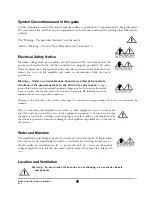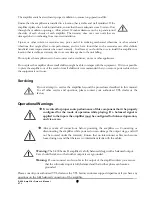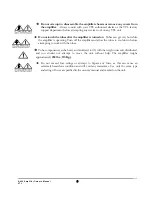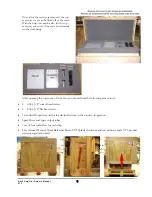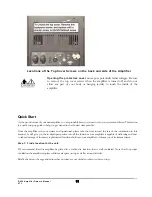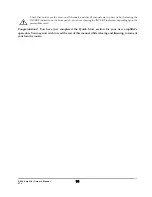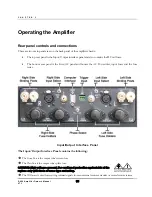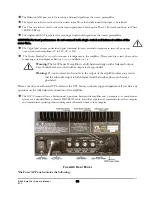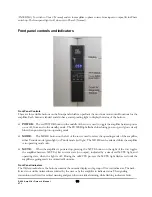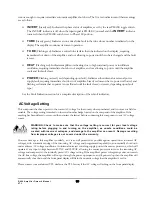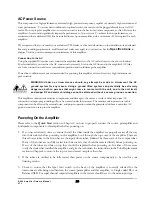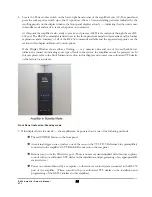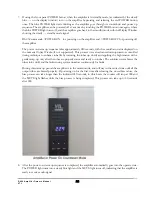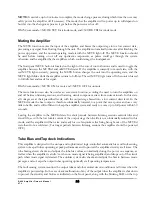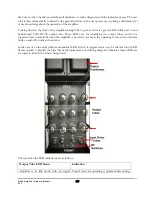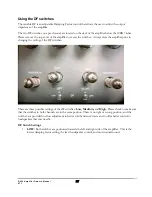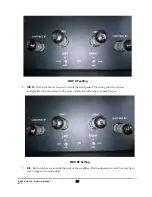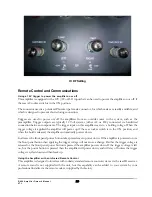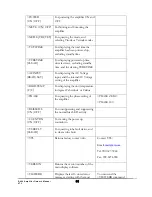
Information labe
l contains the serial number, with date of manufacture (year and week in the first 4 digits) and voltage
and power consumption information.
Power Rocker
switch: Turns the amplifier on into the Standby mode. Press up for Standby, and down for completely
powered off.
AC Power Inlet:
Used for connecting the amplifier to the AC power from a wall outlet, using the appropriate 20A
power cord.
Logic Fuse:
AC fuse for the universal logic power supply.
B+ Fuse:
AC fuse for the B+ and bias power supply transformer.
Input Fuse:
AC fuse for the input and driver stage B+ power supply transformer.
Filament Fuse:
AC fuse for the Filament power supply transformer.
CAUTION: High voltages present. For continued protection against risk of fire
replace only with fuses of same type and rating.
Fuse Tester:
For testing whether any fuse is good or blown.
Rear Panel Functions
1. Fuse Tester
Since the fuses used in this amplifier do not show visible indication between good or blown, the fuse tester
facilitates testing of both of the two different types of fuses used in the amplifier. See the Fault section in this
chapter for directions of use.
2. Changing input between balanced and single-ended
To change the input mode between single-ended and balanced move the
Input Select
switch in the direction of the input
to be used. There is no front panel indication of the input mode being selected.
WARNING: It is critical for proper sonic performance of this component that it be properly
configured for the correct mode of operation. If a balanced signal is applied to the inputs, the
unit should be configured for balanced operation, and vice-versa.
Since the two inputs differ in gain, for proper channel balance it is recommended that all amplifiers in the system be set
to the same input.
WARNING: This is a very high-powered amplifier, capable of extremely high levels. Do not
change cables or the Input select switch while the amplifier is in operate mode, as speaker
and amplifier damage may result. Turn off all components before plugging or unplugging any
cables into either amplifier input.
3. Changing amplifier phase
Some preamplifier and source components invert phase by design, and in some cases balanced outputs might be phase
inverted. In some countries pin 2 of the XLR connector is positive (US standard) and in other countries (e.g. Japan) pin
3 of the XLR connectors is positive. When plugged into a VTL component a pin 3 positive configuration would cause
phase inversion, as all VTL equipment with balanced connectors observes the US standard of pin 2 positive.
Please note that all VTL products are designed to work in 0 or positive phase when in Phase 0 mode, and the amplifier should be set to the
Phase 0 mode when using a VTL preamplifier in the system
.
When using a phase inverting design, instead of having to change the speaker cables from + to -, switch to Phase 180
(INVERTed) and set the amplifier to phase inverting from the input to the output by pressing the Phase switch on the
rear panel down. The front panel indicator shows the red INVERT light when the amplifier is set to the Phase 180
S-400 Amplifier Owner’s Manual
VTL
17


